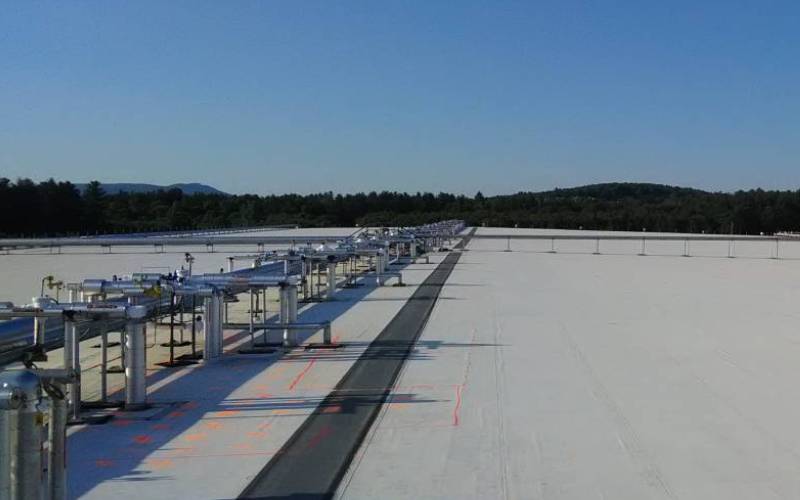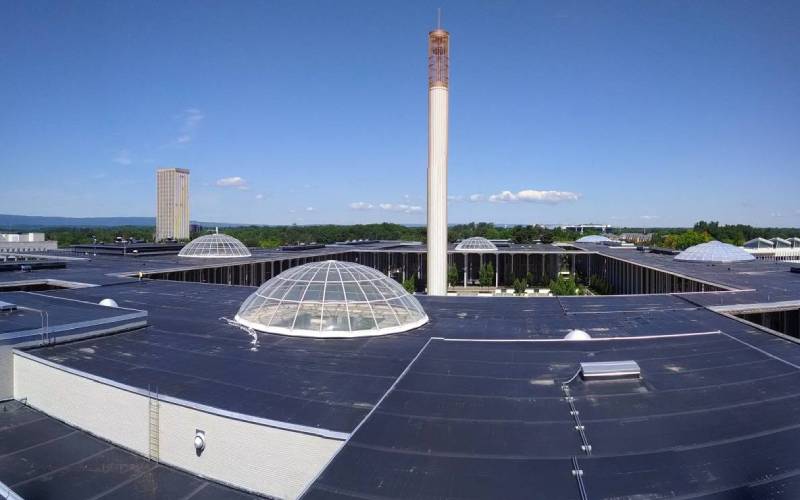Nuclear Roof Moisture Survey
An accurate alternative test method for locating moisture laden insulation in almost any type of roof system, including buildings with multiple layers of roofing.
While Infrared Roof Moisture Surveys are the most accurate and efficient means of scanning most roofs, certain membrane types, roof systems, and environmental conditions can limit the IR cameras from detecting heat in moisture laden insulation. For these more difficult situations, a Nuclear Roof Moisture Survey is the best method for detecting subsurface moisture.
Using safe and accurate Troxler 3216 Nuclear Moisture Gauges, numerical readings are taken at regular intervals over the roof surfaces that correspond with the amount of moisture below the devices. Core samples are then taken to determine which nuke reading represents the threshold between wet and dry insulation and all readings above this threshold are deemed moisture laden.
This is the preferred moisture analysis method for roofs with thicker membranes, stone ballasting, reflective coatings, or multi-layered recovery systems, as well as the only reliable method for moisture detection in cold weather conditions.
Nuclear Moisture Surveys include…
- Rooftop moisture analysis
- Nuclear moisture survey using 10′ x 10′ grid
- Rooftop marking of grid points, wet areas, and core samples
- Written report including
- Moisture survey operating principles and procedures
- Roof construction and moisture content of core samples
- Quantification of all moisture laden insulation
- Color CAD drawing including
- Roof plan to scale of all roof areas by numerical designation
- Locations of all moisture laden areas and core samples
- PDFs and two hard copies of report and drawing
What Roofs Can Be Scanned With This Method?
Can Be Scanned
- All Single-Ply Membranes
- Smooth & Gravel Surface Asphalt BUR
- Modified Bitumen (SBS) Membranes
- Liquid Membranes
Must Be Scanned
- Ballasted EPDM roofs
- 3-4 Ply Modified Bitumen Membranes
- Aluminized Coated Roofs
- Multi-Layered Roof Systems
- Roofs During Cold Weather
Can't Be Scanned
- Silicone/Foam Roofs
- Metal Roofs
- “Green” Roofs
- Roofs Without Insulation
Benefits of a Moisture Survey
- Locate moisture laden insulation
- Isolate leak source areas and identify potential defects
- Determine if a roof is in need of targeted repair or full replacement
- Accurately determine the scope of work prior to issuing bid documents
- Eliminate unknowns to dramatically cut down on up-front costs
- Eliminate costly extras and change-orders during roof projects
- Identify existing dry insulation to be incorporated into a replacement system, reducing overall costs and material waste.
- Check the integrity and workmanship of a new roof system or repair
- Ensure a manufacturer’s warranty will be issued upon completion of a new roof system
More about Nuke Surveys…
Prior to the survey, a CAD drawing of the roofs is generated with a 10′ x 10′ grid superimposed over each roof area. Once in the field, the intersecting points of the grid are measured out and marked on the roof surface with marking paint. Nuclear moisture readings are taken at each point and at other points deemed necessary or suspicious until an array of numbers covering each roof area is obtained.
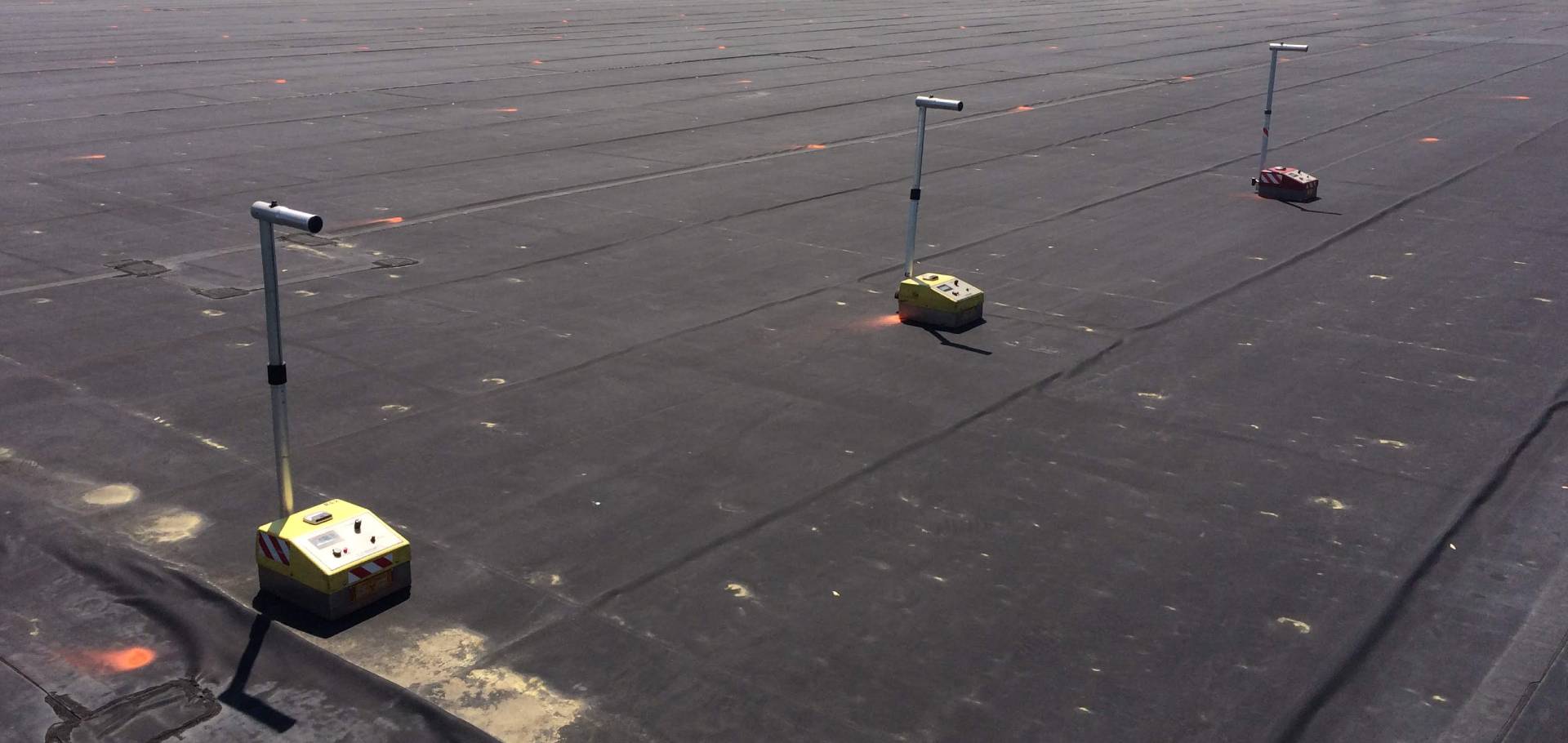
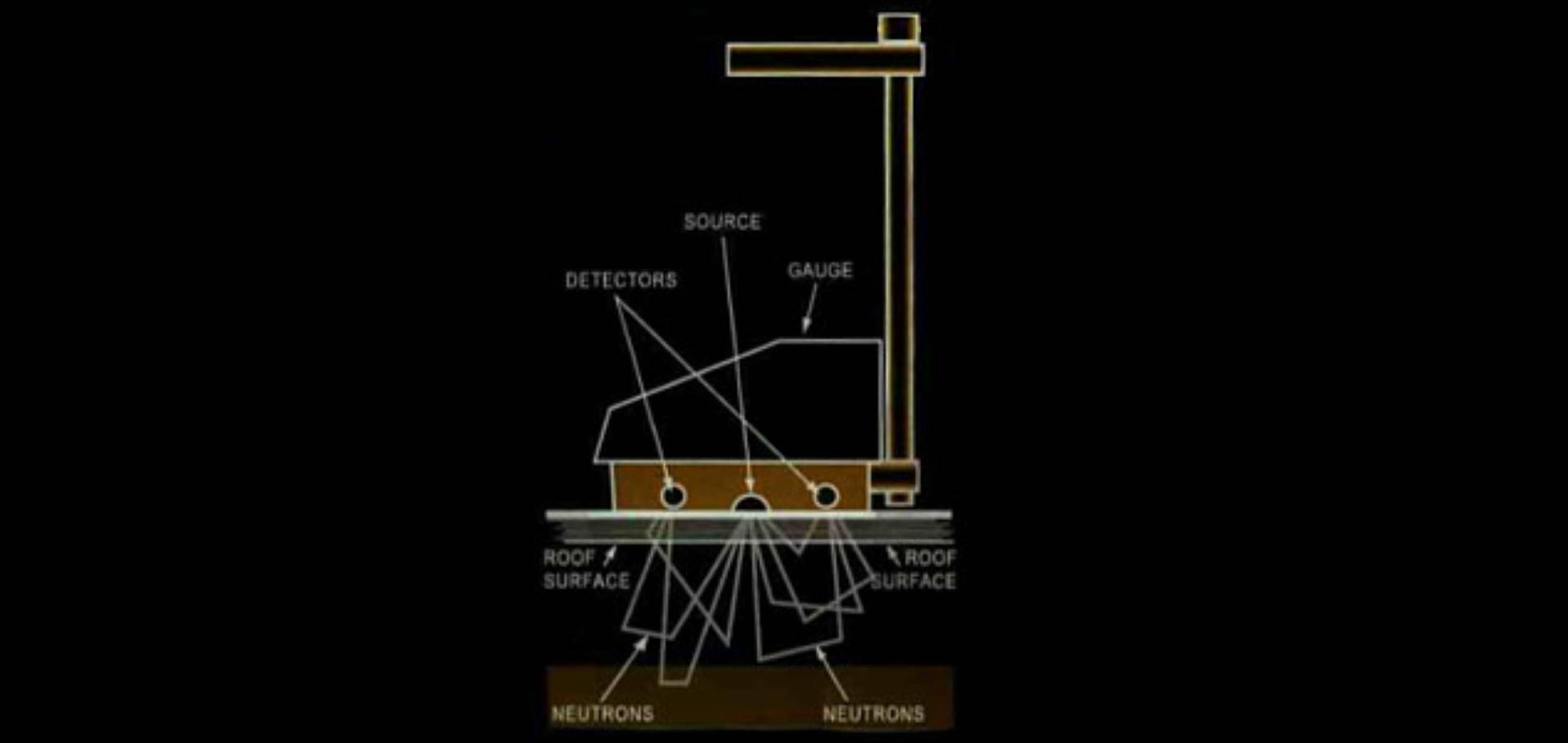
The nuclear gauges are actually detecting hydrogen by expelling neutrons down into the roof system. They pass through all materials except hydrogen, which bounce some of the neutrons back to the device for detection. Many common building materials contain hydrogen and do slightly affect the nuclear readings, but the devices respond most significantly to concentrations of moisture in all types of roof insulation and recovery boards.
Because of the various combinations of building materials that may be present in a roof system, each roof reads a little differently and the meters must be calibrated to each system through core sampling. Core sampling typically starts at a location with a nuclear reading close to the median value of all readings. If the insulation is dry, another core is taken at a higher reading. If it’s wet, another is taken at a lower reading. This process is repeated until the nuclear reading that represents the threshold between wet and dry insulation is determined. We use great consideration and our years of experience to take as few core samples as possible while still obtaining the necessary information, and all core samples are properly patched according to the membrane type.
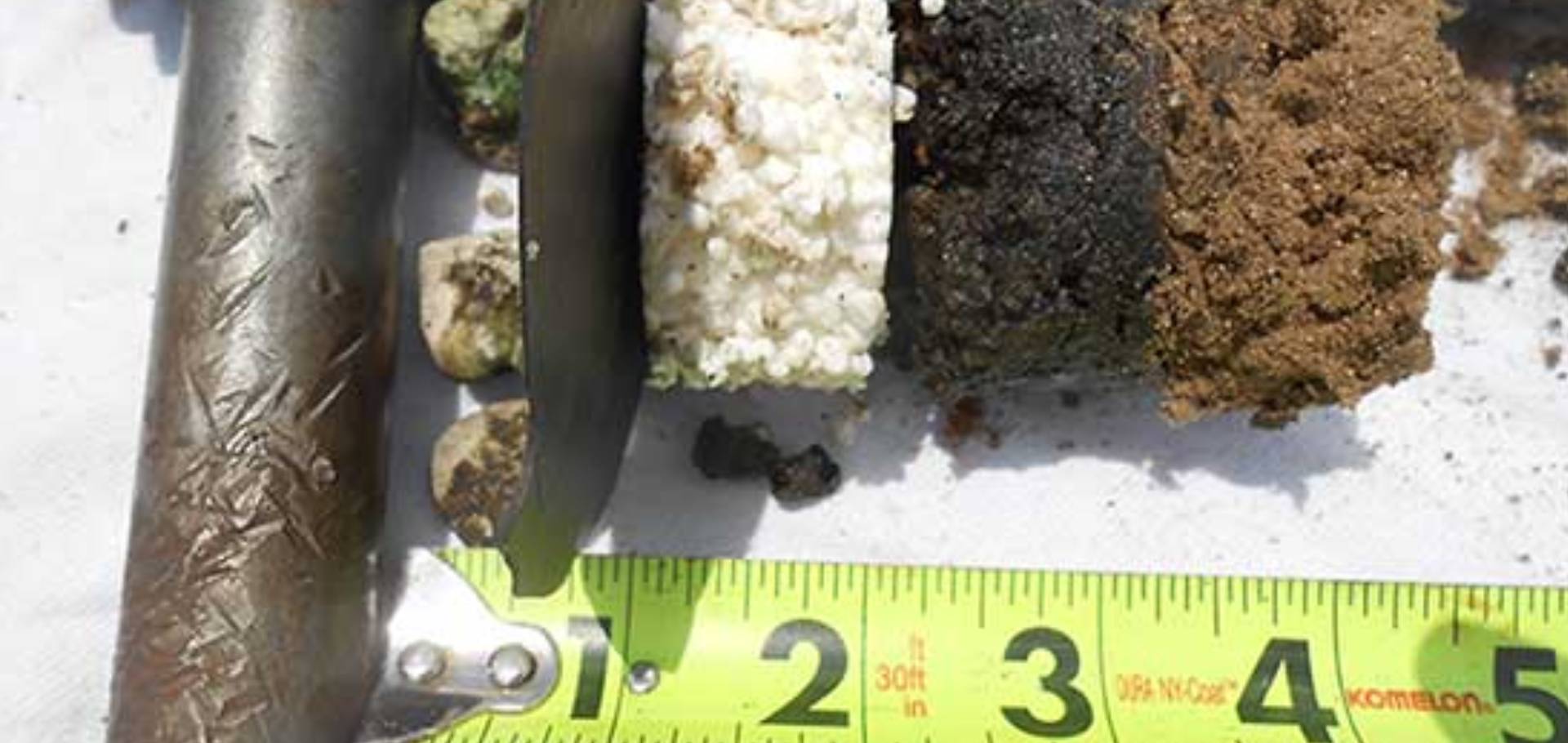
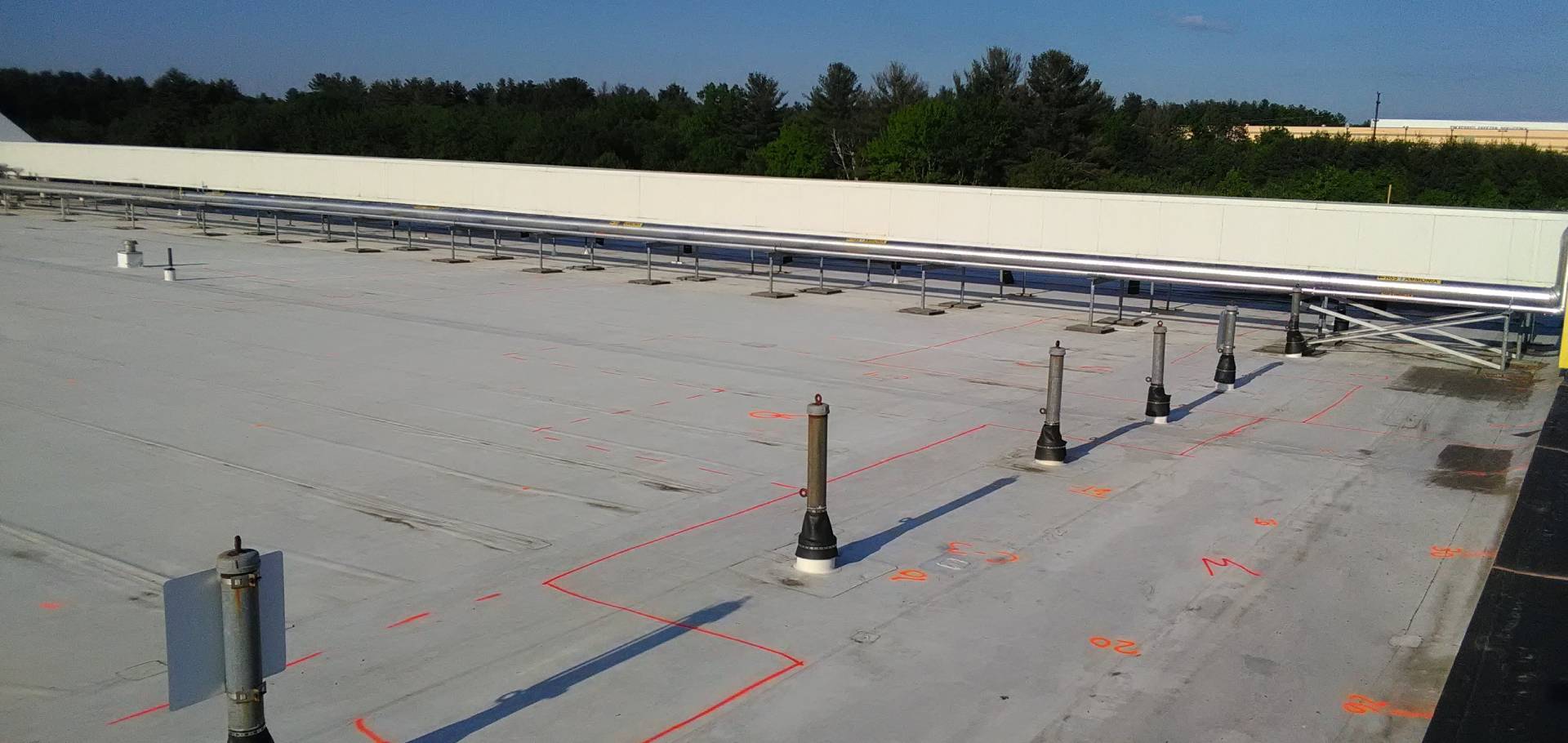
Once the moisture threshold is determined, all nuclear readings above this threshold are considered moisture laden and are outlined on the roof with marking paint. This information is then used to generate the final CAD drawing and report which details the results of the moisture survey and quantifies all moisture laden areas.
Related Services
Infrared Roof Moisture Surveys
The most accurate and efficient method for moisture detection in most commercial roofing systems.
Asbestos Sampling and Testing
Roof top sampling of suspect building materials by licensed inspectors and testing by a certified laboratory facility.
Construction Documentation
Detailed documentation of materials, thicknesses, attachment methods, and structural deck systems.


